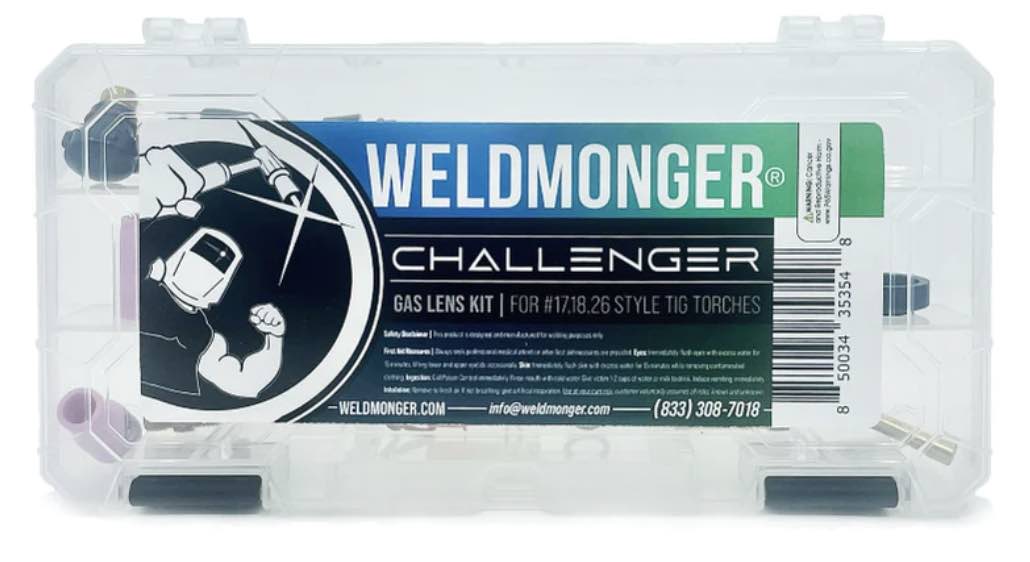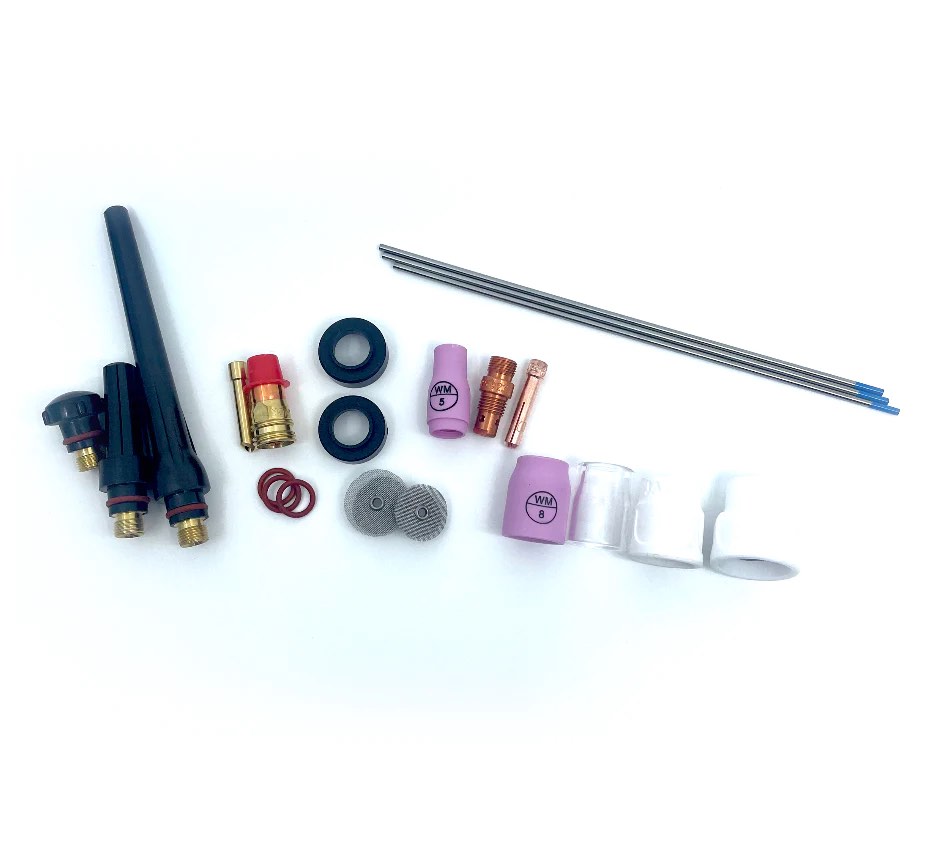Tig Welding Lap Joints on Cold Rolled Steel and 4140 steel
...Introducing the New WeldMonger Challenger TIG kit that includes the most frequently used Cups.
How to Tig Weld steel lap joints. This weeks video is on tig welding lap joints using 11 ga cold rolled steel, some thick 4140 steel, and even a lap joint on some bearing sleeves.
My brain was all over the place while I was making this video so you are going to have to stick with me here and if you need to rewind to watch something twice, that is perfectly acceptable.
I used 4 different tig inverters for the arc shots in this video and you know what? As far as dc tig welders go, there just is not that much difference from one machine to the other unless you need a really low amp start or want to pulse.
All of the tig welders used in this video are capable of welding razor blade thicknesses, along with some pretty thick stuff too.
AC tig welders are a whole nutha story. When using AC mode for aluminum, there are big differences from one tig welder to another.
But that is a topic for a later video.
Here is a short summary of what is in this video...
**Tig
welding lap joints in 11 ga (3.2mm) cold rolled steel....without filler
metal, and with filler metal....and without pulse and with pulse.
**welding a 11 ga (3.2mm) aluminum lap joint with a tapered electrode.
**a multipass weld on 4140 lap joint
**and a practical application lap joint of a bearing sleeve on the inside diameter of a heavy wall steel tube.
All of this was done using a 3/32" (2.4mm) 2% lanthanated electrode and either 3/32" (2.4mm) or 1/8" (3.2mm) filler rod
Here are some of the settings for the different jobs...
11 ga (3.2mm) lap joints dcen current with no pulse
with no filler 105 amps
with filler 115 amps
11 ga (3.2mm) lap joints with pulse
50% pulse on time
40% background current
0.7 pulses per second
.500" 13mm 4140 steel
1st pass 170 amps 3/32" (2.4mm) er70s2 filler rod
2nd pass 180 amps 1/8" (3.2mm) er70s2 filler rod
4140 steel is used extensively in aircraft tooling for its strength, machinablity, hardness, and dimensional stability.
Even
though plain cold rolled steel is a lot cheaper, cold rolled has built
in stress and can move all over the place when machined. especially
after welding.
4140 will harden and preheat and post heat treatment are sometimes
required in order to have a quality product with no brittle areas prone
to cracking.
But for the sake of this video, and since the pieces
I welded were headed for the scrap pile, I just focused on welding
technique without spending time on a preheat.
The job that cropped up while I was messing around welding scrap pieces was a roller with pressed in bearings on each end.
My
job was to weld in the sleeves that were machined to hold a sealed
bearing. That created a lap joint on the inside diameter of the heavy
wall tube.
The machinist made the sleeves to a dimension too tight to press in
so the plan was to heat the heavy tube to expand it and then quickly
push the sleeves in.
Guess what? the first one went in too far and
locked. so we had to cool it off, reheat the outside and use a ram from
the other side to tap the sleeve to where it belonged.
The other side went in like cake.
But there were so tight, that I only needed to weld one small tig pass on it.
that pass went in using about 150 amps.
Thats it for this week, if you want to watch more tig welding videos, just click right here















